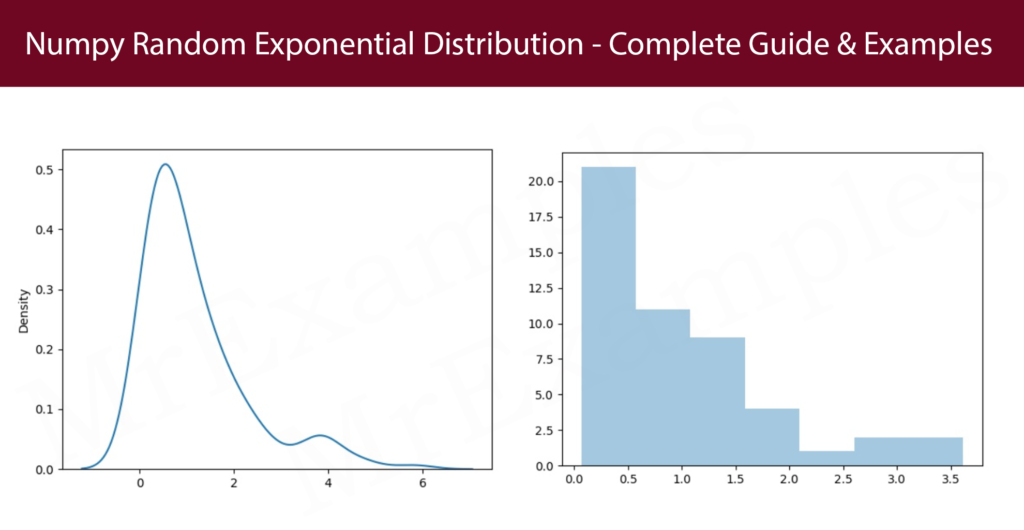Exponential Distribution In NumPy
In this article, we will discuss the properties of the NumPy random exponential distribution and how to use the numpy library to generate random numbers and compute various statistical properties of this distribution.
It’s useful in various applications such as:
- In queuing theory, the exponential distribution is used to model the inter-arrival times of customers. It can be used to generate random inter-arrival times for simulation purposes.
- In reliability analysis, the exponential distribution is used to model the time until failure of a component. It can be used to generate random failure times for simulation purposes.
- In finance, the exponential distribution is used to model the distribution of stock prices. Numpy random exponential can be used to generate random stock prices for simulation purposes.

Numpy Random Exponential Distribution
In Numpy random exponential, exponential probability indicates the time until the next outcome, such as failure/success.
Syntax
numpy.random.exponential(scale=1.0, size=None)
There are two parameters in it:
| Parameters | Overview |
| scale | the inverse of rate ( refer to LAM in the poisson distribution ) is initialized to 1 by default. |
| size | Provides the array’s shape. |
Create a sample of an exponential distribution with a 5.0 scale and a size of 4×2:
Example:
The following is a sample of an exponential distribution with a default scale and a 5×5 size:
Example:
Visualization
To visualize the numpy random exponential distribution, we can use the matplotlib library.
Display the graph of the Exponential Distribution:
Example:
Apply hist = True and kde = False:
Example:
Relation Between Poisson and Exponential Distribution
A Poisson distribution works with the number of instances of an event appearing within a given period of time, while an exponential distribution identifies with the interval between appearances in Numpy random exponential distributions.
Conclusion
Numpy random exponential is a powerful feature for generating random numbers from an exponential distribution.
It is useful in many applications, including queuing theory, reliability analysis, and finance. By specifying the scale parameter, the spread of the distribution can be controlled. Numpy random exponential is just one of many functions in numpy that can be used for random number generation.
